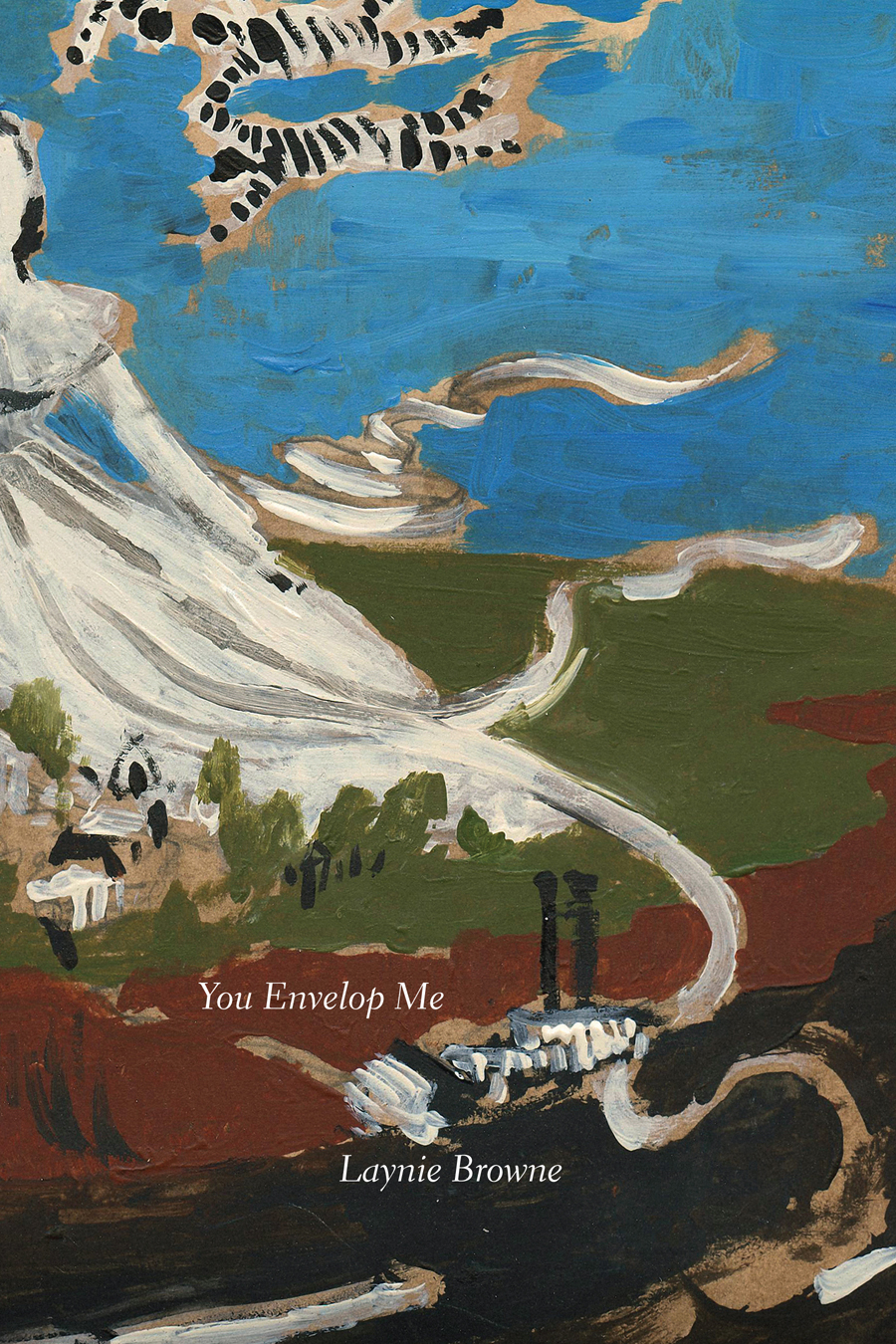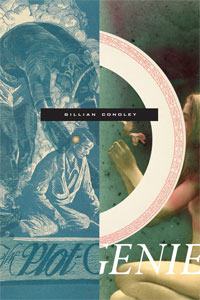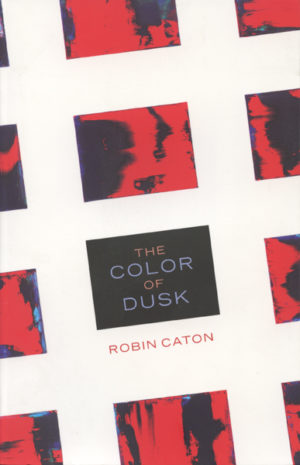Description
You Envelop Me, a book length poetic elegy, takes its title from the thirty-second psalm, and explores connections between birth and loss. How does one in mourning converse with those absent, yet ever present? These poems seek to enter that sturdy edifice of emptiness, wherein time is suspended, and one is paradoxically held by the departed. How is a motherless daughter conceived? What befalls those who succumb to waves of grief akin to contractions of birth? You Envelop Me is woven from contemplative practices which permit us to approach the unimaginable. The world with the beloved removed is permanently altered, perhaps most significantly in the way the living learn that indispensible vision occurs beyond the visible world.
Laynie Browne’s You Envelop Me, written in the tradition of elegy, attempts to come to terms with the continuing presence of absence. The work calls to mind the recent work of Susan Howe (This That) and Cole Swensen (Gravesend) as Browne locates the departed as motion, a wave, birdlike. Mourning in these captivating poems becomes it’s own birth–a birth where death engenders new life, and changes the terms of what it means to be alive inside grief, within a word, in this world.
Claudia Rankine
Laynie Browne writes the heart of something, then exceeds this heart to write a complicated soul, both “concentration and praise.” I want to find a language that resembles both nourishment and the interior life to describe the feeling I had at the end of reading. At the beginning of reading, I oriented with curiosity to the “interim russet,” the way that “form and color” are “synonymous,” both interregnum and “passage.” Is a book a gate? You Envelop Me keeps opening to the space below gardens and before rivers. I kept walking (reading) until I reached the water, a remedy, a sparkling egg.
Bhanu Kapil
Laynie Browne’s You Envelop Me invites me into its dreamery— both the stuff of dreams & the place where dreams are made. “How long can this go on, her knowing everything?” As long as I read & re-read. We read these poems & see Browne’s brilliant mind at work— the song & the psalm of thought, of mourning, of living, of divination, of figuring out. “We sleep prone, like / explosives closely fitted.” You Envelop Me is in an intimate space. In this space sometimes there is a silence— in which some people arrive & others leave, in which some wait for others who will not return, in which some wait to arrive & depart & these are the same for a moment. Browne’s language is in & of that silence, disrupting & respecting it, scoring it. The music of mourning is a beautiful kind of music. We must remember that. Browne’s book is thoughtful, elegaic, musical, & urgent.
Pattie McCarthy
About the Author
Reviews
Excerpt
Laynie Browne’s most recent books include P R A C T I C E (SplitLevel 2015), Scorpyn Odes (Kore Press 2015) and Lost Parkour Ps(alms), in two editions, one in English, and another in French (Presses universitaires de Rouen et du Havré 2014). Her honors include a 2014 Pew Fellowship, the National Poetry Series Award (2007) for her collection The Scented Fox, and the Contemporary Poetry Series Award (2005) for her collection Drawing of a Swan Before Memory. She teaches at University of Pennsylvania and at Swarthmore College.
A brief interview with Laynie Browne
(conducted by Rusty Morrison)
I’ve been an avid reader and admirer of your poetry for so many years and so I am delighted to have the opportunity to publish a book of yours. And, especially this book, which speaks so intimately of loss, and yet is resonant with all the aspects that bring fullness to life as well—the natural world; the deep connection that this book makes to spirit; to contemplative practices and the texts can be its catalyst; to the mythic; to the power of image to transform our experience of living. One of the many aspects of your work that I deeply admire is the way that you navigate so many levels of presence. There is, in nearly every poem, a landscape of language unfolding before our eyes so many realms of possibility. While many of the poems navigate levels of elegy, they do so in a way that is unlike any other poet’s work. They breathe in many atmospheres. They do not narrow in grief, though they never avoid or deny grief; they open so many realms in which a reader can realize the abstractions of “absence” of “emptiness,” sometimes frightening, always animate. One of many examples might be this poem:
Psaltria
She does not know how long anything lasts—passing—obligatory harrowing waves crushing. You could say winnowing, if she were chafe, hewn, risen and felled.
Contractions of mourning last longer —mourning waves— walk with her— and we will follow the invisible image she scries— having no endpoint, different durations and lengths between—. Nothing material comes though something immaterial is —.
A world permanently different with the beloved removed.
See the picture with a form cut out. She overlays it upon everything she sees, as if—pause— taking it out of blotter— but time doesn’t stop so places instantaneously— doesn’t know she walks within a self imposed frame— figure cut out. She sees an outline in silver upon a map, hears a voice inside her head, considers how to steady herself, against what once was more than ether.
Could you speak to any of the issues I’ve raised? Anything you might say about the inception of this text, the situation of elegy, the work of image as you conceive it?
Interesting that you use the phrase ‘the work of the image.’ What is the work of a mourner? This work is often invisible and therefore images are useful companions, giving pictures to unfounded experience. Elegy is the form we don’t wish to understand, until by necessity one finds oneself on the other side of an undeniable threshold. Once there, the experience is multi-dimensional. Time becomes other. I hope that with this book a reader can enter the conversation which is an endless question. If we cannot converse with the absent beloved we can speak with signs, messages, realms beyond material. I wondered how is it that in mourning one may walk through a landscape identical to the landscape one navigated before loss, yet this landscape is irrevocably altered. Where irreplaceable love is lost new understanding opens. Empathy opens. I wanted to share both the narrowing and broadening of perception. I wanted to enter the space where all separations are illusory. I also wanted to make that space available to the reader.
When I read this text, I am reminded of so many things that Barbara Guest has written about the poem. Here is this passage, which seems especially apt, with respect to your work: “Ideally a poem will be both mysterious (incunabula, driftwood of the unconscious), and organic (secular) at the same time. If the tensions become irregular, like a heartbeat, then a series of questions enters the poem, what is happening? What does the poem itself consider to be problematic?…It is noticeable that a poem has a secret grip of its own, separate from its creator.”
Do you feel any kinship to these ideas? are there specific points in the text that you might discuss, where you work with both the mysterious and the organic?
Thank you for this quotation from Barbara Guest, whose work is essential to me, and whose words resonate strongly. The process of writing this book was very mysterious to me. I only know I was out walking in the desert, through the color yellow, through tears, in liminal space. I recorded dreams and visitations while also attending to the landscapes around me. I thought much about flight, and bodiless travel. There is a connection between the mysterious (spirit) and organic (landscape, bird and butterfly). In the absence of a body does a loved one appear in the guise of wind, electrical atmosphere, other living forms? I experienced inner vision and the unconscious as inseparable from physical surroundings. This book was dictated from a place I can never entirely understand and certainly could not replicate. Additionally the space of the deathbed is another mystery both concrete and otherworldly.
I’d be grateful if you chose a point in the manuscript—perhaps a section of particularly powerful significance for you, or that was especially difficult for you—and then discuss why. What experience or convergence of experiences initiated any particular aspect of this work that might be fruitful to speak of? What did the writing of that part of the manuscript demand of you? Change in you? And/or you might focus part of the book that surprised you or frightened you because of what it demanded from you.
I’d like to speak about the passage you quoted above. One thing that very much surprised me in writing this book and in my mourning process was the connection between birth and death. Childbirth requires intense physicality, and finality of passage. Whereas in birth this rigorous process precedes the arrival of new life, I experienced death in a similarly overwhelming process after the passing of a loved one. I describe this process of mourning as similar to contractions in childbirth. And whereas contractions increase and intensify as birth becomes imminent, the contractions of mourning I experienced were most intense immediately after loss. Painful grieving can arrive from nowhere, several years later with the same force. They can swallow a mourner. Suddenly traversing time one finds oneself back at the brink of crossing. Time becomes non-sequential. It wasn’t writing the book which demanded anything of me. It was living through an intensity of sadness and separation. My writing became my companion, my oracle, and an attempt to remember and record what I experienced as gifts of proximity to spirit. I was cognizant during the time that this heightened sense of closeness would wane. I wanted the company of writing through the unaccountable, and lostness. I leaned even more heavily than usual on writing as contemplative practice, as well as on meditation and dream transcription. My hope— an ongoing and impossible aspiration— is to be entirely present.
Would you tell me a bit about yourself? Anything about you that is not in the bio printed in the book, and that might give insight into your more personal relationship to this text?
I wrote this book as a daughter mourning her step-mother. As a mother mourning the loss of a grandmother to her children. As a sister mourning with siblings. And as an intimate friend to an amazing woman. My step-mother was a wise confidante, a generous spirit, and a person of enormous strength and radiance. I wrote this book as a person experiencing abandonment and depths of sadness, as one who seeks a conversation with that which is indivisible from life. I wrote this book inside the human question of ephemerality. I listened for voices and sought signs. I found some comfort in the universality of my situation. Mourning can feel extremely isolating. Often it was in quiet, and in silence that this book wrote itself. This book was a collaboration with much I cannot explain. I could say about myself that in this text I am personally standing with everyone who strives to find meaning in impermanence.
I know you can’t list them all! But, on first thought, on impulse, can you answer: Who are a couple, a few, authors, artists, thinkers, workers (in any mediums) with whom you feel a kinship? Who/What comes to mind, just at this moment: who are you reading, listening to, looking at, watching, visiting currently? (You could say something about some of them, if you’d like, which makes this more alive for our readers.)
Poetic company is foremost on my mind. I have been writing a series of what I am calling ‘homage texts,’ books written to and for particular women writers who have been great sources of inspiration and formative to my poetics. Some of these projects are linked to particular books. For instance, for Rosmarie Waldrop I wrote a book titled In Garments Worn By Lindens, which is a writing through her book Lawn of Excluded Middle. I was thinking about how this book resonated with me decades ago, and how I appreciate new layers of meaning with each new reading. Incredibly striking in this book are Waldrop’s investigations of gender, perception, personhood and language. I wrote a book for Alice Notley, Everyone and Her Resemblances, which is an attempt to converse with an oracular presence. I deeply admire Notley’s ability to create conversations which move between realms. Most recently I completed a draft of a book for Lyn Hejinian, titled Intaglio Daughters, based on readings of her book The Unfollowing. This book is also connected to elegy, and the space which seems impossible to follow. Books for C.D. Wright and Cecilia Vicuña are near complete. I am currently dreaming about a book for Mei-mei Berssenbrugge. These projects create a particularly rich reading experience, a way of being with, studying and deepening affinities. In this process I experience an intense gratitude for the works of these amazing writers.
You selected the cover image for YOU ENVELOP ME, could you speak to the artist’s work (whom you chose) and to the relevance of this image to this text?
The artist, Noah Saterstrom, is a long time friend and collaborator. I love Noah’s painting of a mythical powerful female presence with a definite Southern aura. I love the way the figure rises iconically above the landscape yet also hosts and engenders life. I love the combination of pictorial and dreamlike depicted together. The figure is protective, connected to the elements both real and imagined.
Laynie Browne dilates on . . . paradoxes that shadow the work of elegy: a work that harrows in both senses of the word, fructifying while also tearing to shreds the soul. . . . Browne’s grieving subject is the threshed and chafing ample grain of her own grief. Just so, You Envelop Me is a panoply of vibrancy—the opening pages are filled with the presence of angels and birds and textiles and treasures—even as it tries to work through the death and deep absence of a loved one. The jarring tension to which Browne exposes us in You Envelop Me is the insatiable abundance of the world that rims around and shadows every total loss.
16
for I have taken refuge in you
A book —whose wings— swallow me
Bird, created from water mixed with sand
Uses of wings, and claws hold oil for lamps
Conceiving a wing-ed book is beginning to sort one’s thoughts
An egg placed under the foot of a bedframe— to steady
Quills for writing were unknown in Talmudic times
Birds of three hundred and sixty-five hues read
headlines or psalms as an indistinguishable combination of
Affliction, concentration and praise
“Flee as a bird to your mountain.”
^ back to menu



